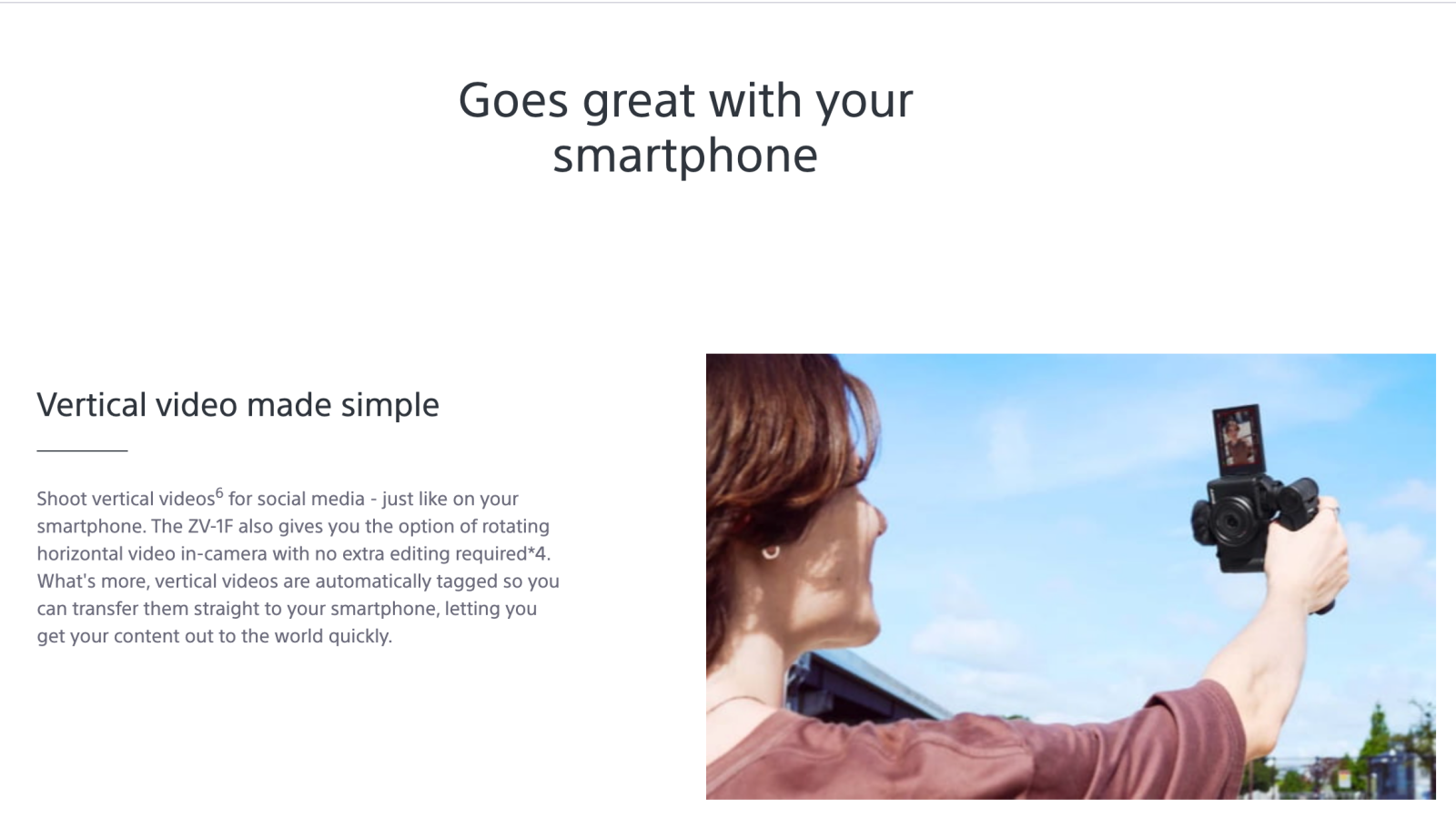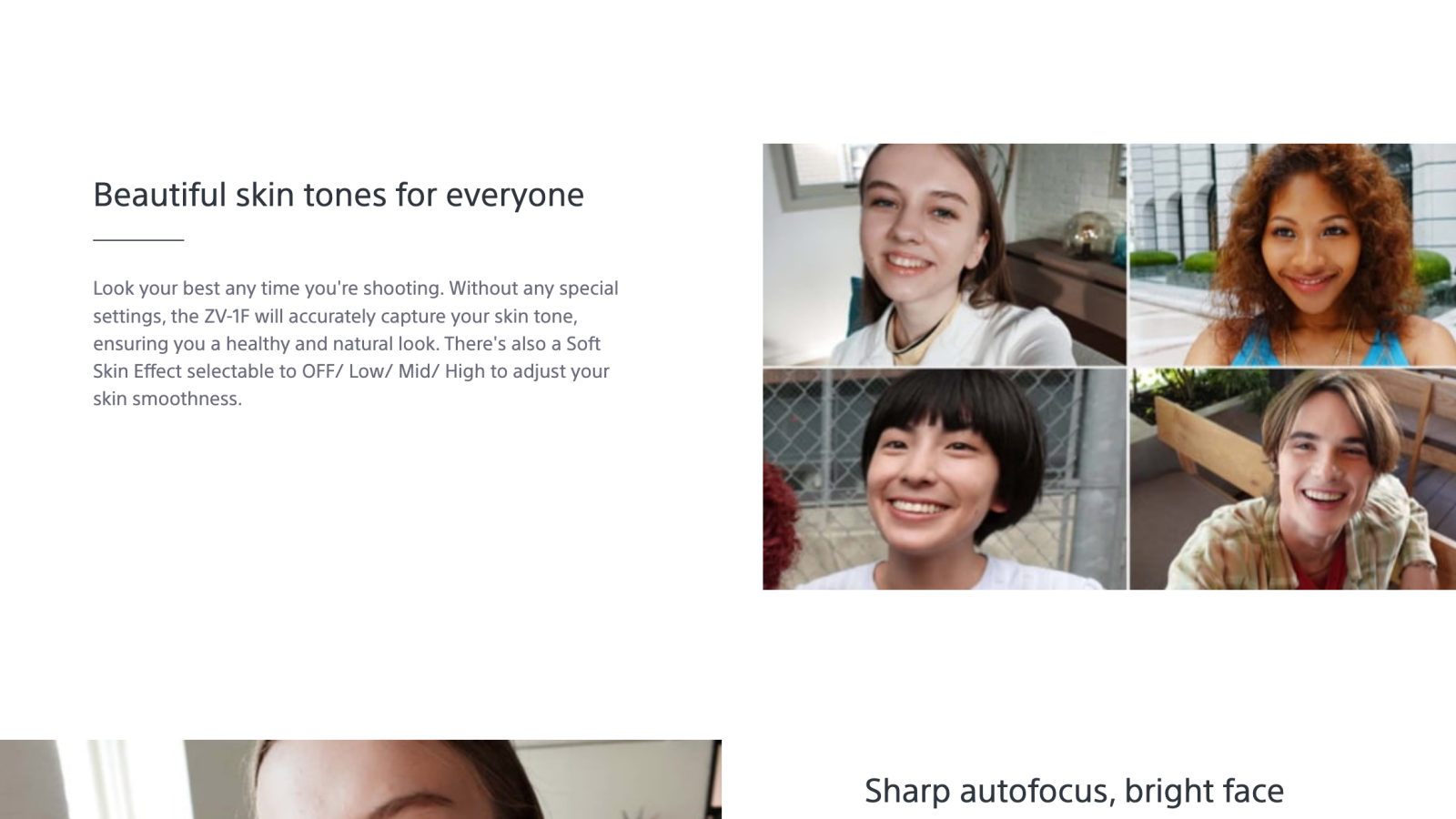Apple and Samsung laughing; Sony thinks new $500 camera can replace your iPhone, Galaxy!
Once society found itself in the age of social media, it was clear – sharing photos and videos of ourselves online will become a “vital” part of our “real” lives…
While social media, indeed, is the culprit of this bizarre way of living life, our phones/portable computers are the vehicles that power all of this 24/7, non-stop access to entertainment, sharing, and even doom-scrolling.
The 25-year-old me also finds it ironic – phones have been trying to become “proper cameras” for ages and now “proper cameras” are becoming more like phone cameras? What? Why?! So, let’s take a quick look at the new Sony ZV-1F and see how Sony’s intentionally trying to draw some of Apple and Samsung’s customers back with a budget pocket camera that’s suspiciously similar to… a phone.
And I know we’re on PhoneArena, but for the sake of this story, please, try thinking of Sony as the film-grade camera gear maker, instead of the company that makes Sony Xperia phones. Who buys those anyway? Oops.
The Sony ZV-1F is Sony’s second “vlogging camera” but it’s more similar to an iPhone than it is to a “real camera” now

Your smartphone also goes great without it.
Before I move on, I have to give credit to Gerald Undone from YouTube, who made a 24-minute long video on the Sony ZV-1F, which I strongly recommend watching, as it inspired me to put together this story and helped me make up my mind about this camera.Anyway, it seems like Sony’s realized pocket cameras are on their way out now and the company’s trying to do something about it, which is… admirable! I always commend manufacturers who are trying, especially if they’re trying hard.
Some might already be familiar but the Sony ZV-1F, of course, is a follow-up to the somewhat iconic (it’s seriously arguable how iconic a pocket camera can be in the age of phones), Sony ZV-1. The two big distinctions between the original ZV-1 and the new ZV-1F are the price and one important hardware element.
The original Sony ZV-1 launched at $700, while the new ZV-1F goes all the way down to $500. Also, the ZV-1F is the company’s second vlogging camera to be built around a Type 1 sensor but it now drops the 24-70mm equiv variable zoom in favor of a fixed, 20mm equivalent lens.
Both the significantly lower price and fixed lens make the Sony ZV-1F more likely (at least according to Sony’s aspirations) to be a camera accessory that you buy to go with your phone, instead of completely replacing it! But with that, the Sony ZV-1F also turns out to be weirdly similar to a phone camera…
Ultra-wide-angle FoV and a fixed lens and aperture make the Sony ZV-1F the iPhone of pocket cameras, but is that a good thing?

Beauty filters.
Sony gave the ZV-1F a Cinematic Mode-like feature where the camera uses software to add blur to the background of your videos.
Without a doubt, what screams “more like a phone camera” most is the Sony ZV-1F’s fixed 20mm lens. A wider FoV is very much a phone camera trait that became popular thanks to LG’s ultra-wide-angle cameras, which were later adopted by… every other phone-maker.With the fixed lens comes a fixed f/2.0 aperture, which is another phone camera trait that’s been holding phone cameras back for ages. Ironically, Huawei’s brand new Mate 50 Pro now features a variable f/1.4-f/4.0 aperture that (as samples show) can make a massive difference when taking photos/videos of close-up subjects.
Sensor-cropping, digital zoom, and extensive use of computational photography and sharpening on a “real camera”
As seen in Gerald Undone’s extensive review, the ZV-1F uses sensor-cropping (just like an iPhone 14 Pro) to give you lossless 1.5-2x zoom but pretty much nothing beyond that. What’s more interesting to see is that Sony’s using some digital sharpening to make photos and especially videos appear, well… sharper.
While the level of computational sharpening on the ZV-1F is nowhere near as dramatic as on photos taken with an iPhone 14 (Apple really needs to tone it down!), it’s there, and I can’t say I’m the biggest fan. Even phone cameras like the Xiaomi 12S Ultra (which, ironically, uses a custom 1-inch sensor made by Sony), now try to keep photos and videos as natural as possible.
To Sony’s total credit, sensor-cropping and computational photography aren’t at all features that phone-makers pioneered. Anyway, this story is about inspiration (which swings both ways when it comes to phones and cameras) and not “who copied what”.
Electronic instead of optical image stabilization – the Achilles’ heel of the Sony ZV-1F
Another omission from the Sony ZV-1F is hardware or Optical Image Stabilization (OIS). The ZV-1F relies completely on what Sony calls “Active Mode image stabilization” or what we, phone people, know as Electronic Image Stabilization (EIS). Again, phones didn’t invent EIS, but they did make it very popular.
Although that’s not exactly the trend amongst new flagship phones anymore, we’ve seen plenty of Android devices that relied completely on EIS to give you smooth videos. As it turns out, what’s similar between the 2022 Sony ZV-1F and the 2016 Google Pixel is that neither of them have OIS. Unfortunately, while Google made EIS work wonders for the Pixel, Sony’s clearly failing to do achieve the same with the ZV-1F. I guess computational photography on pocket cameras can only go that far?
“Beautiful and accurate skin tones for everyone” – software skin-smoothing brings the Sony ZV-1F closer to a Xiaomi camera phone
This smartphone camera-inspired software feature isn’t at all a drawback, though. You have the option to leave it turned off but it’s a great thing to have for those days when you might not feel like putting on makeup but still want to vlog…
Look your best any time you’re shooting. Without any special settings, the ZV-1F will accurately capture your skin tone, ensuring you a healthy and natural look. There’s also a Soft Skin Effect selectable to OFF/ Low/ Mid/ High to adjust your skin smoothness.
Sony
As phones are becoming more like “real cameras”, real cameras are becoming more like iPhones; Sony ZV-1F finds itself in the middle of a weird transition

iPhone 14 Pro on the left, Sony ZV-1F on the right (courtesy of Gerald Undone). The Sony has a massive advantage in low-light thanks to its 1-inch sensor, but this lead will likely shrink if we compared it to the Xiaomi 12S Ultra.
While a pocket camera like the Sony ZV-1F still has some obvious advantages like more natural photo and video processing, meaning it’s more likely to give you a more consistent shooting experience compared to a phone camera, Sony’s streamlined approach also happens to make the ZV-1F too similar to a smartphone, which almost defeats the purpose of buying the camera in the first place.For example, the fixed lens-aperture combo will seriously limit your creative options since as you switch to taking photos with the ZV-1F, you’ll find yourself with little lossless zooming options, which is a feature that phones like my Pixel 6 Pro have made me appreciate dearly when taking snaps on vacation.
At the same time, the ZV-1F takes away the best features of a phone camera, like the compact form-factor, light weight and instant sharing abilities, making some use case scenarios more complicated than with an iPhone or an Android device.
On the opposite end of things, does all of that mean I’m done asking from phones to become more like “real cameras”? Absolutely not! The obvious and massive advantages of big sensors, variable apertures and (hopefully soon enough) variable zoom are exactly the direction I want phone cameras to go in.
I’m just not sure “real cameras” should be driving in the opposite lane?!


